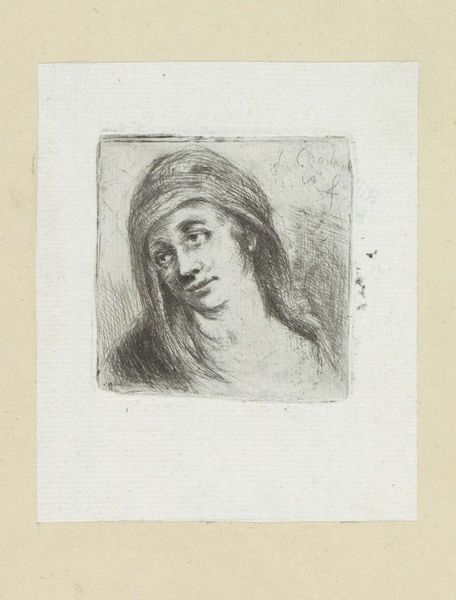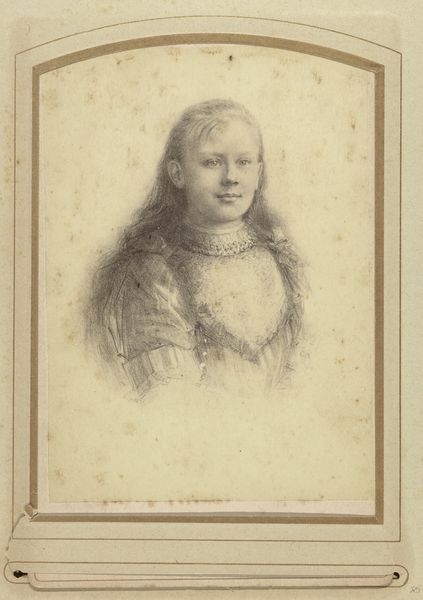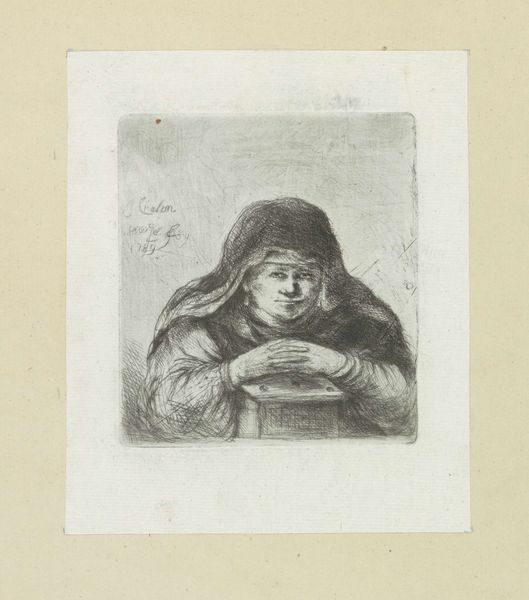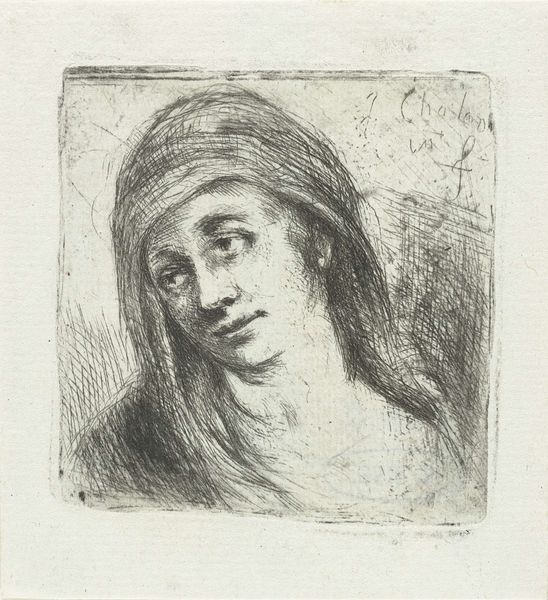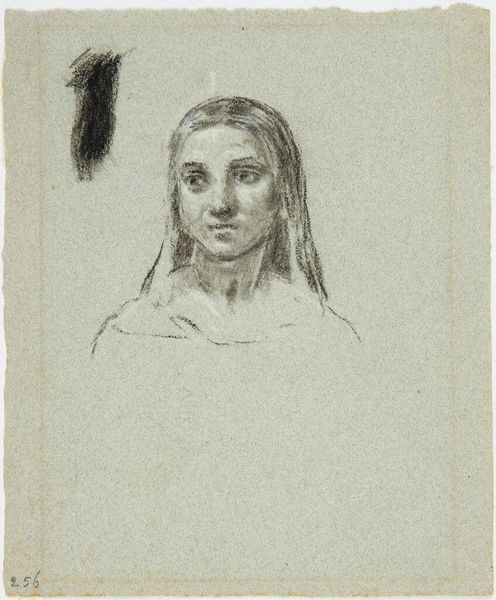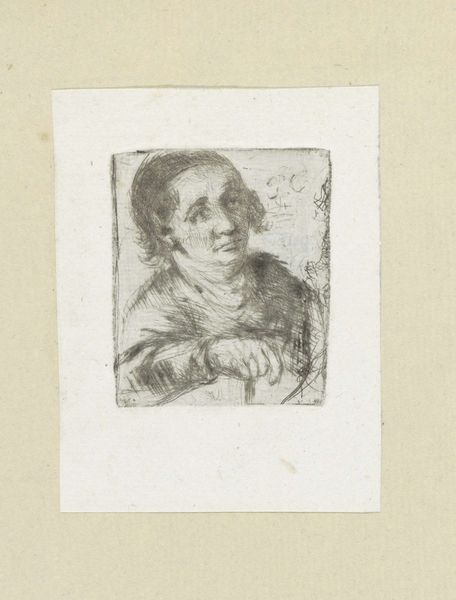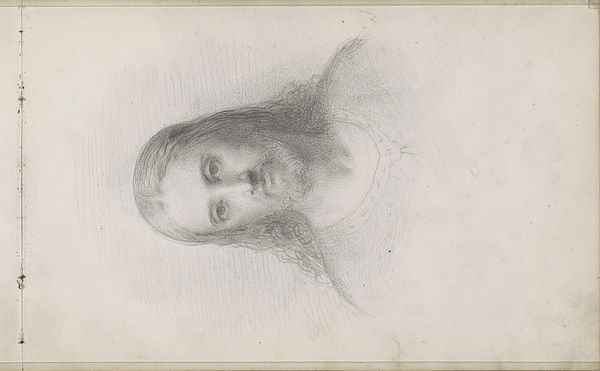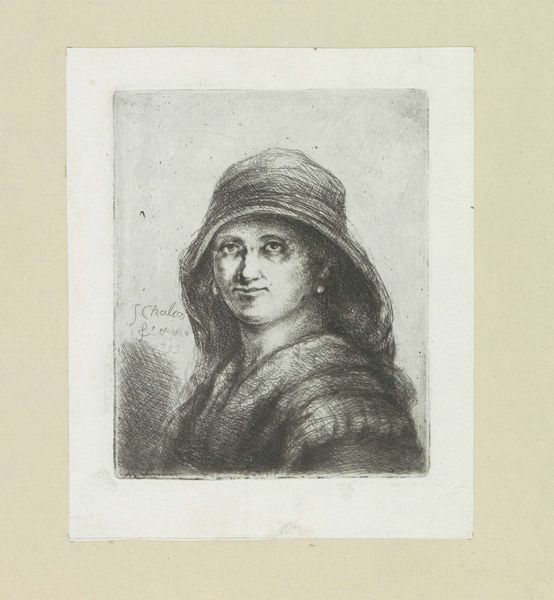
drawing, etching
#
portrait
#
pencil drawn
#
drawing
#
aged paper
#
light pencil work
#
etching
#
pencil sketch
#
sketch book
#
personal sketchbook
#
idea generation sketch
#
romanticism
#
sketchbook drawing
#
pencil work
#
sketchbook art
#
realism
Dimensions: height 68 mm, width 59 mm
Copyright: Rijks Museum: Open Domain
Jan Chalon created this small etching of a mature woman in a headscarf in the late 18th century. Etching involves coating a metal plate with a waxy, acid-resistant substance called a "ground." The artist then scratches an image into this ground, exposing the metal. The plate is then immersed in acid, which bites into the exposed lines, creating grooves. This process yields a distinctive graphic quality. Note the fine network of lines that model the woman's face and drapery. The etched line has a particular character – more broken and irregular than an engraved line, reflecting the corrosive action of the acid. This adds a softness and tonal variation to the image. Considered as a medium, etching became a vital means of reproducing and disseminating images in the age of early capitalism, which aided in the circulation of ideas and aesthetics. Appreciating the technical processes and cultural context in which the print was made allows us to move beyond traditional hierarchical distinctions between fine art and craft.
Comments
No comments
Be the first to comment and join the conversation on the ultimate creative platform.
